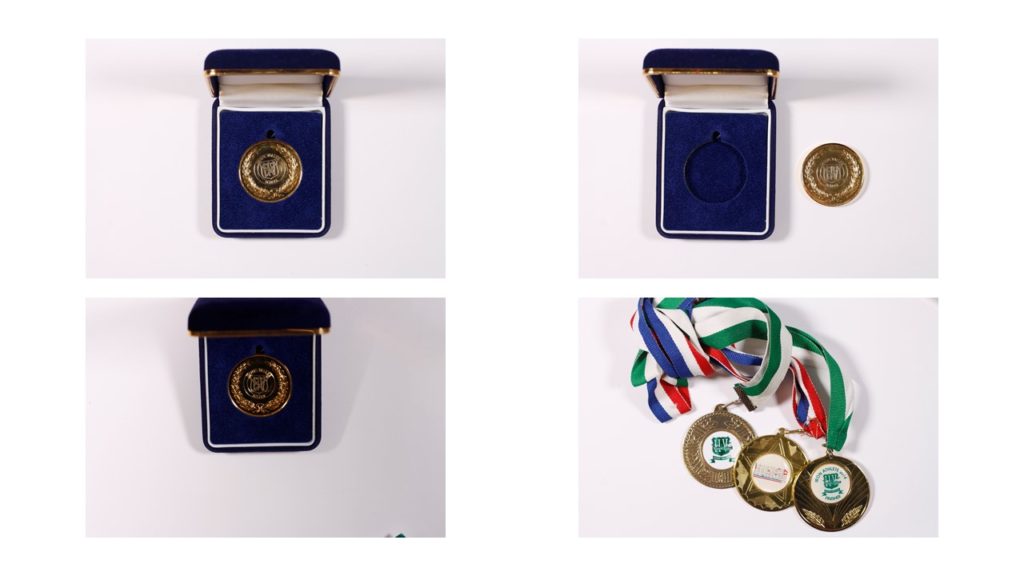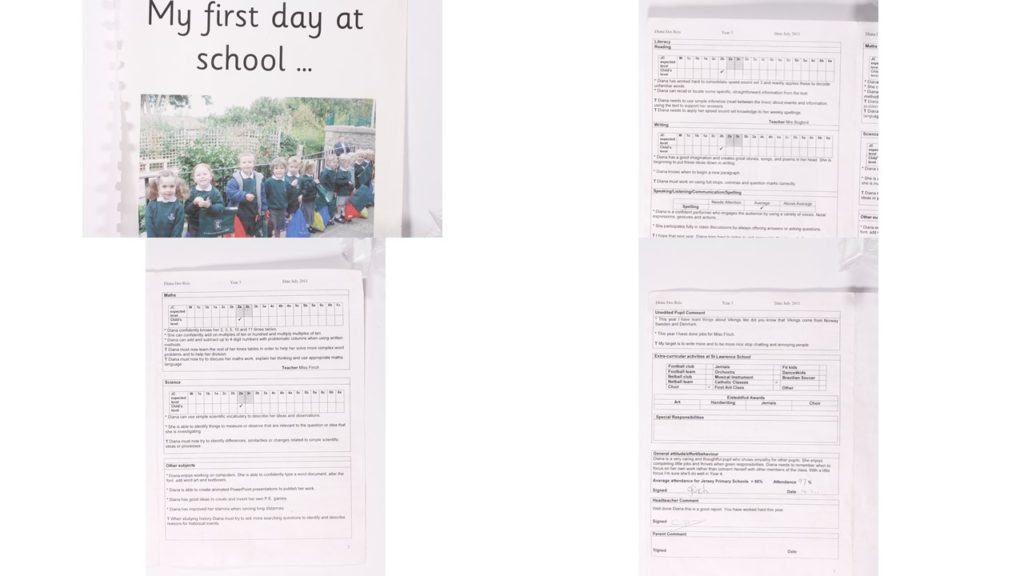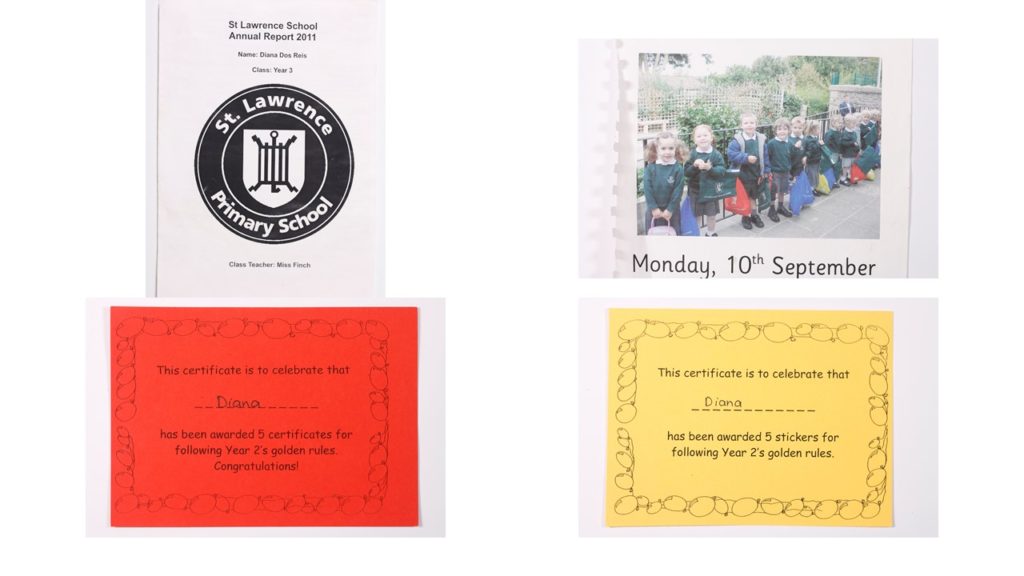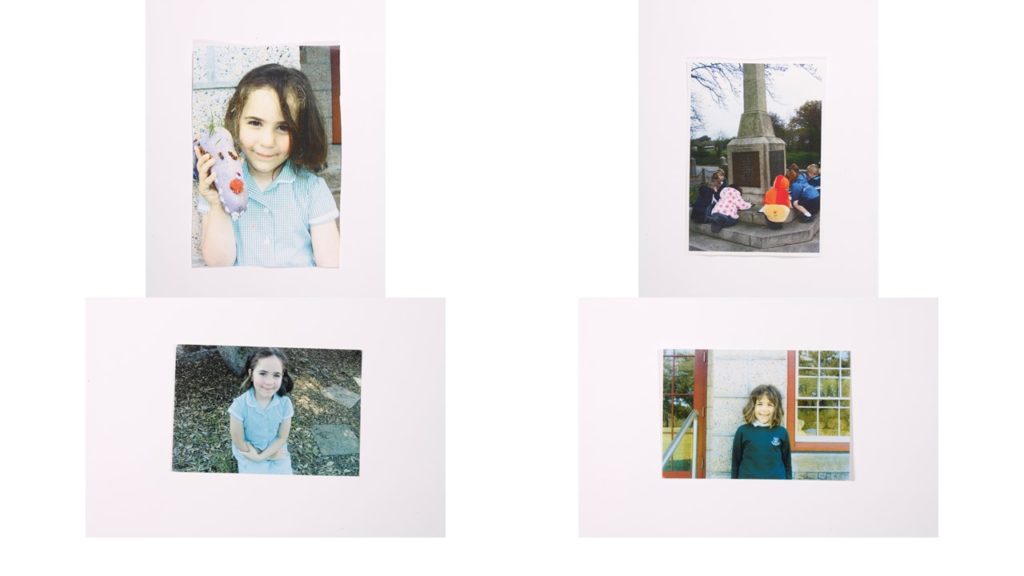In my personal investigation I am going to be exploring the life that my papa, Terry Batho, lived and documenting the legacy he left behind. I was ten years old when my papa died. I was close with both my gran parents but at that age I didn’t have the same sort of relationship with him than I would now. By looking into the life that my grandad lived and what kind of man he was, it gives me the opportunity to get to know him more and get a sense of closeness to him even though he has passed away. By speaking with my nan, my mum, my aunty and his close friends I can begin to paint a picture of the kind of man my grandad was. I can start to feel like I knew him and by speaking with his friends I can start to see the unique character that my papa had. I am going to be focusing on one of Terry’s biggest passion was Mini’s. He owned multiple over the years, buying them, fixing them and selling them. His garage has tools that he used to work on his cars, he also had specialist tools that were designed certain task to do with classic mini’s. He also had a very special car that was superior above all the rest. When his father died he used his inheritance money to by the millennium edition Mini Cooper S John Cooper works edition. This car was one of the small batch of Cooper S models that were the last of the classic British design to roll of the production line before BMW introduced the new shape mini in 2000. His legacy lives on and has influenced me. When he died in 2010, many members of the Jersey Mini Club did a drive by and an escort to the cemetery. My dad drove his special edition car in the escort with my uncle in the passenger seat and I sat in the back. I can vividly remember sitting on the red leather seats in the small back of the car. I thought to my self this is the coolest car I have ever been in, the metal dashboard and the cooper S details stood out to me and since that day I have always wanted one. And now I own one.
Daily Archives: 15/01/2021
Filters
ESSAY
HOW DO BOTH CORINNE DAY AND NAN GOLDIN CREATE A ‘DIRTY REALISM’ WITHIN THEIR PHOTOGRAPHY?
‘Dirty Realism is the fiction of a new generation of American authors. They write about the belly-side of contemporary life – a deserted husband, an unwed mother, a car thief, a pickpocket, a drug addict – but they write about it with a disturbing detachment, at times verging on comedy. Understated, ironic, sometimes savage, but insistently compassionate, these stories constitute a new voice in fiction.’ – Bill Buford.
The term ‘dirty realism’, coined by Bill Buford, formed the title of the Summer 1983 edition of the Granta magazine. Buford wrote an explanatory introduction at the beginning of Granta 8, to define this North American literary movement. This beautiful, honest movement not only spread through literature but through art and photography too. In 1986, Nan Goldin published ‘‘The Ballad of Sexual Dependency”, a deeply personal diary composed of 700 snapshot photographs, documenting her life. The protagonists of the book and the photographer herself are frozen within intimate moments of love, pain, ecstasy, sex, and drug use. The book itself is the definition of ‘Love and Rebellion’ and has deeply inspired me to create my own personal photo diary, including the people and things I love, but more importantly, focus on exploring the idea of dirty realism and intimacy in photography. A Photographer who, in the following decade, emerged in the grunge genre of photography is Corinne day; a highly skilled fashion photographer inspired by Nan Goldin. Corinne day created ‘diary’ a photographic book similar to The Ballad of Sexual Dependency. Both photographers use specific techniques in order to convey emotion and intimacy within their photos, techniques that I will uncover and analyze and use to lead my creative path. This category of photography really changed the way many photographers understood photography, and it strongly inspired later generations of photographers, including myself, to express very personal life experiences through an album of images.
DIRTY REALISM
The area of art that has particularly sparked my creative direction is an extremely honest side to reality. Dirty realism is ”a literary genre characterized by a spare, terse style that features struggling, working-class characters in sterile, bleak environments”. The writers of this subcategory of Realism, such as Angela Carter, Bobbie Ann Mason, Richard Ford, Tobias Wolff, seem to write about the more mundane aspects of life, the more ‘real’ aspects. As I explained earlier, the term ‘dirty realism’, was coined by Bill Buford and it formed the title of the Summer 1983 edition of the Granta magazine, which would define a new school of American writers and inspire the world of photography. After extensively researching this movement, I came across Charles Bukowski and Raymond Carver, the ‘Dirty Realism Duo’, credited as the fathers of the “Dirty Realism” genre during the 1980s. The duo’s intentions branched from the minimalism movement, a primarily American movement originating in New York City in the late 1960s. The movement was outlined by ‘the stripping of fiction down to the least amount of words and a concentration on the subject’s view of the object’.The characters inCharles Bukowski and Raymond Carver’s books are usually ordinary, everyday people – the lower or middle-class worker, the unemployed, the alcoholic, the addict, the beaten-down-by-life. Similar to the photography aspect of dirty realism, it was ‘characterized by extreme simplicity of form and a literal, objective approach. This approach was quickly introduced into the creative arts as a form of fashion photography, stemmed from the idea of being ‘real’, and incorporated movements like grunge, indie, and punk: ‘defiance of traditional norms and nihilism.’ photographers shot gritty and uncomfortable pictures during these fashion subcultures, involving over or undersized clothing.
NAN GOLDIN
Nan Goldin wrote “‘The Ballad of Sexual Dependency is the diary I let people read,’… ‘The diary is my form of control over my life. It allows me to obsessively record every detail. It enables me to remember.’”. This amazing photographer is extremely well known for her controversial yet earthy outlook on life itself, an outlook which to the vast majority of people, is undeniably true. Nancy Goldin was a part of that great number of people, whose lives entailed grief and chaos. Goldin talks about her family during her time growing up: ‘’My father, who was not always great with my mother, was critical…There was a lot of bickering going on, and I wished they’d get divorced most of my childhood.” She also explains that her mother was very possessive of her father at that time, who was more focused on his sons. A tragic moment is Nancy’s life is detailed in the introduction of The Ballad of Sexual Dependency. During the preface, she writes very honestly about the heartaching situation, and makes note so some of the political topics she explores withing her photoraphs; “I was eleven when my sister committed suicide,” and continues to write:
“This was in 1965, when teenage suicide was a taboo subject. I was very close to my sister and aware of some of the forces that led her to choose suicide. I saw the role that her sexuality and its repression played in her destruction. Because of the times, the early sixties, women who were angry and sexual were frightening, outside the range of acceptable behavior, beyond control. By the time she was eighteen, she saw that her only way to get out was to lie down on the tracks of the commuter train outside of Washington, D.C. It was an act of immense will.
In the week of mourning that followed, I was seduced by an older man. During this period of greatest pain and loss, I was simultaneously awakened to intense sexual excitement. In spite of the guilt I suffered, I was obsessed by my desire.”
Goldin, a famous American photographer in the dirty realism movement, regularly focussed on taboo subjects such as fetish, sex, homosexuality, drug addiction, and transvestism. Her most notable piece was composed of almost 700 snapshot-like images that produce a stunning and personal narrative of her life between the late 1970s, 1980s, around Boston, New York, Berlin, and more. During an interview in 1996, Goldin describes her meaning of snapshots: “People take them out of love, and they take them to remember – people, places, and times. They’re about creating a history by recording a history. And that’s exactly what my work is about.”The book itself was originally a film, and was developed with multiple live and improvised performances, while goldin flipped through the slides alongs with a beautiful soundtrack; from Maria Callas to The Velvet Underground. The Ballad of Sexual Dependency, released as a film in 1985, is presented in its original 35mm format, including photographs that also emerge as images in the slide show. Shortly after, during 1986, Nan released “The Ballad of Sexual Dependency” as a book. This was Goldin’s first book and remains her best known.
One well-known piece by her was a self-portrait of herself after being beaten by her husband: to ‘show her world without glamorization or glorification.’ This photograph in particular truly displays the mundane reality of life itself, the alcoholic, the abuser, the victim, etc. Some of her images could even need viewer discretion due to their exposing nature of abuse. The photographs themselves were often blurred or gritty, which created a very authentic and ‘everyday’ grunge and dirty shot. When Nan was a young adult, the controversies around gay rights and the ‘LGBTQ community’ were still up in the air and not completely accepted. This makes Goldin’s work that little more questionable.
CORINNE DAY
Corinne Day, a very similar artist to Nan Goldin, is the main inspiration for my project, the stunning photographer uses her photography to document her everyday life, displaying the intimacy and love in her circle of friends and family. Day was born in 1965, and was a self-taught fashion photographer who was one of the first to introduce a new documentary look to photography, a formation of both candid and intimate images. Corinne Day’s style of photography is often put in the ‘dirty realism’ genre. Corinne has always been a massive admirer of Nan Goldin’s work, and it clearly shows in her most known work “Corinne Day Diary”. In her autobiography she states: “I met Nan there and to my astonishment and delight Nan had been an admirer of my work since the early Kate photographs. I first discovered Nan’s work in New York in 1992 when I was there meeting with Barney’s department store. Ronnie Cook took me to a photography book store and the first book I picked up was The Ballad of Sexual Dependency. At this time I had no knowledge of art photography, only what I had seen in commercial magazines. I had already been conveying my own personal experiences through my photography in magazines. I wanted the ordinary person to see real life in those pages. I found Nan Goldin’s and Larry Clark’s work liberating and their work also validated the way I had started to take photographs myself.
Corinne Day has been the main inspiration for my project, the stunning photographer uses her photography to document her everyday life, displaying the intimacy and love in her circle of friends and family. Corinne Day’s style of photography is often put in the ‘dirty realism’ genre; “a literary genre characterised by a spare, terse style that features struggling, working-class characters in sterile, bleak environments”. Her images are ‘real’, and display immense personal events and emotions. Before Corinne passed away she created a beautiful and personal book called “Corinne Day Diary”. The title ‘Diary’ is a very important aspect of the book, it simply explains what the book itself is; a diary of Corinne Day. The title of the book is written in what seems like Corinne’s handwriting, underneath a photograph of Tara’s face. Tara also seems to be a main character in Corinne’s life, a very close friend, and an important figure. Even though the photographer of the book is Corinne Day, there are images of herself which may have been taken by Tara (one of the main faces in the diary). One can only assume that Corinne made the photographic diary to remember all of the events in her life, but I think it was also to produce photographs in a ‘grunge’ and ‘dirty realistic’ style. I think the book was really for herself before she passed following the diagnosis of a brain tumour in 1996, but also for her close friends and family, hence the book name ‘diary’. “The series draws comparison with artists such as Nan Goldin and Larry Clark, who also live what they photograph. Like them, Day is curious about people who pursue experiences beyond the norm.”
Diary is cold and melancholy, it archives young lives with uncompromising realism in the form of photographs, so we as the viewers feel encompassed in the visual and not just the worded description. The books genre is clearly dirty realism and Grunge. At other times, the photos are joyful and celebrate friendship. Day clearly shares her life with the lives of her close friends, and decides to share experiences like hospitalisation, partying, drugs. Clearly, her best friend Tara is a main character in the diary, we follow her though partying, sexual liaisons, illness and finally, motherhood. However, whether in the photograph or not, she is always emotionally present in her photographs. In the image above, one of Corinne’s friends, Tara is seen crying at home, told by the caption below the image. What makes the book even more authentic is her handwriting that accompanies each image, describing a short story that will only be memorable to her.
I have been lucky enough to see the book and feel it by hand. There are many different things about the book that have inspired me, but also made the book personal and authentic. The images are all placed in the same orientation on each page, and there is one photograph per page, as well as this, there are no double page spreads, but rather only one image to represent an event. Some photos aren’t of people, but they are aesthetically pleasing. There are no fold- outs or inserts in the book either, this makes the book very uniform and organised, a juxtaposition to the crazy, frantic life Corinne was having in the photos. A narrative is constructed by the captions under each image, even though the images are not in chronological order. The captions are short and seem to be written in Corinne’s handwriting, making it very personal. She tells a story through jumbled photographs, however the captions seem to make sense, and really feel like a diary. What I really enjoy about Corinne’s book, is that all the images are ‘real’ there is no acting or posing, all the images are taken freely, as if they are core memories in Corinne’s mind. This is what really makes Corinne Day part of the Dirty realism genre of photography.
When comparing Corinne day and Nan Golding, There are very clear similarities between the two people, and the books they’ve created. Within their images they clearly perform to the qualities of the Dirty realism genre with how they show their hectic and honest lives through their images. Their personal and raw captions and images really do make it seem like the viewer is looking through the photographer’s diary. The editing processes both artists make truly display how the atmosphere and characters were feeling, whether the photographer was crying in hospital or had been beaten by their husband. I have truly taken inspiration from these beautiful dairies.
BIBLIOGRAPHY
- https://www.corinneday.co.uk/autobiography/
- om/artists/nan-goldin/
- https://www.tate.org.uk/art/artists/nan-goldin-2649
- https://www.moma.org/artists/7532
- https://www.mariangoodman.com/artists/44-nan-goldin/
- https://thephotographersgallery.org.uk/whats-on/exhibition/corinne-day-diary
- https://www.npg.org.uk/collections/search/person/mp88351/corinne-day
Essay plan
Possible essay question:
- What constitutes a ‘real’ image?
- How do Robert Capa and Paul M Smith use ‘fake’ / controversial imagery to emphasize the effects of war and masculinity?
Artists:
- Robert Capa
- Paul M Smith
Plan:
- Essay question: What constitutes a ‘real’ image?
- Opening quote:
- Introduction (250-500 words):
There are multiple criteria required to consider a photograph as ‘real’, does the subject within the image exist or is it imagined, is the photo artificially created or genuine? However, there is an ongoing debate surrounding the way in which we prove and define a subject, moment, or whole image as ‘existing’. Realism, in the arts, is considered the accurate, detailed, and unembellished depiction of nature or contemporary life. This is where Robert Capa’s picture of ‘The Falling Soldier’ or ‘Death of a Loyalist Militiaman’ comes under deep controversy. This image is known to depict the very instant a loyalist militia man, from the Spanish Civil War, 1936, was fatally shot and began to collapse into death. The debate over the authenticity of Capa’s image comes under four main themes: Realism, Representation, Ethics and Truth. As said by Richard Whelan in This is War! “The Falling Soldier is neither black nor white. It is neither a photograph of a man pretending to have been shot, nor an image made during what we would normally consider the heat of battle” A brief synopsis of ‘The Falling Soldier’ would show that there are many different theories in relation to the legitimacy of the image and it’s creation, however, in truth there will never be a clear answer to its legitimacy as only Capa and the men involved in the creation of the image know its full authenticity. Due to the amount of information collected to either prove or disprove this photos originality and the lack of a clear answer, the attention has been taken away from the photographs true meaning. This raises another dispute of whether it matters at all if the image is ‘real’ as stated by Susan Bright in Is It Real? “… reality is perhaps not the most important issue when making a statement about the role of representation in warfare.”
- What is your area study? Realism
- Which artists will you be analysing and why? Robert Capa and the controversy surrounding his image of the death of a loyalist militia man. Paul M Smith and his Pastiche of Capa’s work.
- How will you be responding to their work and essay question? I will explore the realism, representation, ethics and truth of the artists and their work.
- Pg 1 (500 words):
- Historical/ theoretical context within art, photography and visual culture relevant to your area of study. Make links to art movements/ isms and some of the methods employed by critics and historian.
- Pg 2 (500 words): Analyse first artist/photographer in relation to your essay question. Present and evaluate your own images and responses.
- Pg 3 (500 words): Analyse second artist/photographer in relation to your essay question. Present and evaluate your own images and responses.
- Conclusion (250-500 words): Draw parallels, explore differences/ similarities between artists/photographers and that of your own work that you have produced
- Bibliography: List all relevant sources used
Artist references
Richard Billingham
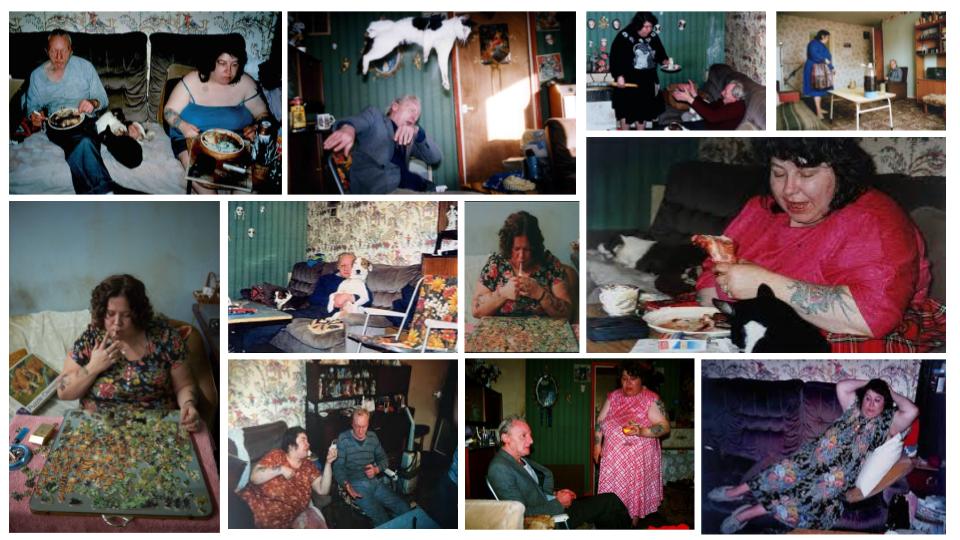
I chose Richard Billingham as one of my artists because his ideas and methods are similar to what I want to do; filming, almost exposing the inside life of my own family. He takes a documentary approach to his work which is what I’d like to achieve. His work also fits into the theme of Rebellion – since his Father was an alcoholic and his Mother was an angry lady with heavy tattoos, however this wasn’t exactly intentional.
He is an English Photographer, artist, filmmaker and art teacher. He is best known for his photography book (Ray’s A Laugh 1996), which documents the life of his alcoholic father, Ray and his obese, heavily tattooed mother, Liz. He’s also made a number of short films for example Fish tank (1998), which again surrounds his parents and exposes what goes on behind the scenes. He then went on to release his first feature film, Ray and Liz (2018). His work originally sprouted from when he aspired to be a painter, and was originally using the images he took as guidelines for his paintings, however, a tutor at Billingham’s art degree course fell upon these images and thought they were different and unique.
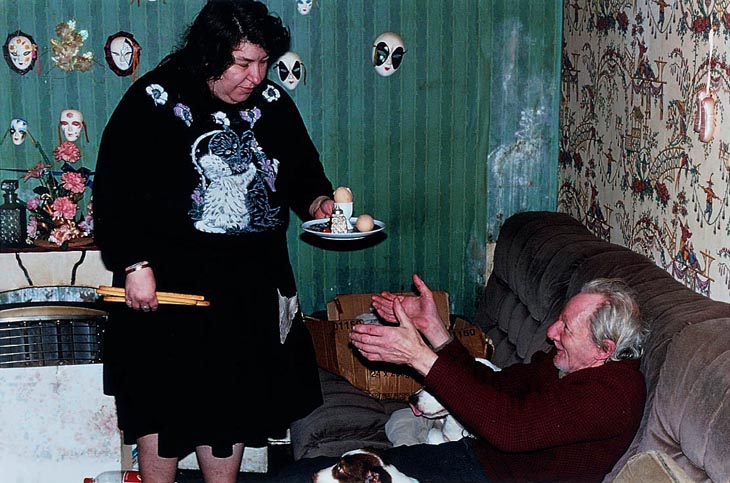
Billingham stated “I realised that if I photograph the whole room on a wide angle lens, you’re showing people everything, whereas if you focus on details then the viewer pieces together what that room looks like. It’s much more engaging – the viewer has to work to fill in the gaps, so I think it can be more engaging that way.” – This gives me some inspiration for the visuals of my film, instead of focusing on a big picture, grab details and smaller aspects of an area to intrigue the viewer. Here are a couple of interview based articles with Billingham:
https://thequietus.com/articles/26164-ray-liz-richard-billingham-interview
https://www.theguardian.com/film/2019/feb/23/richard-billingham-ray-and-liz-interview
PHOTO ANALYSIS
TECHNICAL: Looking at the image above, it is clear that Billingham uses natural lighting, nothing has been set up in order to achieve a specific type of lighting. However it does appear that there is a fluorescent/artificial lighting involved, most probably from the flash on the disposable camera that he used to take the photographs. In his films, he also appears to use natural lighting and no type of flash or artificial lighting has been used in order to achieve a certain type of lighting. Since he was using a disposable camera, the average shutter speed is about 1/100, allowing not much light in, however again, there is a flash. Disposable cameras also have a fixed mode of operation concerning the lens focus, aperture and shutter speed).
VISUAL: No filters or colour adjustments were used within Billingham’s images. Therefore, the colours in his images are natural and true to real life. The tones of his images are overall quite dark, especially when the pictures were taken during the night, however the tone does lighten when the images are taken during daytime. There is no specific composition when it comes to his photographs, as I have mentioned he takes a documentary approach to his work therefore there is no set up and takes images as things are happening right in front of him. This is the same for his films, there is no set up or composition, he simply let’s things flow naturally.
CONTEXTUAL AND CONCEPTUAL: As mentioned, Billingham wasn’t immediately set out to be a photographer, but instead, an artist. However when his tutor saw the photographs he realised that they were intriguing and had potential. His images and films were a portrayal of the poverty and deprivation in which he grew up in Cradley Heath, a town in Birmingham.

The area appears to be quite run down, middle to lower class area. He documented his parents mostly. His Mother being an overweight, tattooed chain smoker and his father being an alcoholic. His upbringing then may have been quite unique and different, compared to others he may have knew with ‘normal’ parents that lived without any addictions etc and lived within the middle to upper class areas. He may have felt many personal struggles when it came to his upbringing and expressed this through photography. Billingham has stated that he ‘just hated growing up in that tower block’. The reason why his images became so popular was because his pictures were surreal, claustrophobic and gave meaning to the idea of “too close to home”. It is not often you get to see someone essentially exposing their every day life and what the go through and have to deal with. As humans we have this inquisitive nature and wonder what happens behind closed doors. After making images, and them having a successful response, Billingham went on to make short films such as Fishtank and eventually a feature film named Ray & Liz. Overall going through major events that happened in his own life such as, when he was 10 years old and the family problems spiraled after Ray lost his job as a factory machinist.
It has been said that Billingham is protective and dismissive of the impacts that his childhood and upbringing has had on him. Instead of processing the hard times, he frames it – and out of that he did get successful, however he has said that “Jason often says to me now that, statistically, we should either be in prison, or dead.”. Richard Billingham most definitely turned a bad thing into a good thing. Which is the place that I am coming from when it comes to making my movie. My Mum does suffer from a terminal illness and things do get hard sometimes however exposing the inside to my life may bring some realization to some people and remind people that everyone has things going on behind closed doors.
Here’s a link to one of Billigham’s epiosode’s of ‘Fishtank’:
Meaning and Methods
Since I am making a film, I would like to focus on Billinghams’s filmmaking when it comes to talking about his meaning and methods. In the second clip I’ve inserted he says that the images he took ‘just happened by themselves’ and he wanted to experiment and see how things would look if he filmed the situations that he was living through. He wanted to explore a new medium to see if the same ‘magic’ would happen that appeared in his photographs. He also stated that with videos, he was looking for a ‘good catch’ and that he wanted to portray the emotions that were being expressed through a video.
He filmed most of his videos on a hand held camera and simply documented what he saw. His focus wasn’t necessarily on techniques but on capturing certain moments in order to create a hard hitting, close to home film. This is what’s good about documentary photography, it’s often non-fictional and true to real life which makes it somewhat more intriguing. He considers his photography ‘accidental artwork’ as he didn’t intend from the start to even be a photographer, but an artist. Billingham goes on to state in the interview that I have linked below that he didn’t want a polished aesthetic – he just wanted to make his images and films very moving emotionally.
Richard Billingham | Photoworks
From all the research it is clear that Richard Billingham’s meanings and methods are similar to what I would like to achieve. I’m not looking to make a technical, studio film, I’m wanting to make a hard-hitting, true to real life documentary film that captures certain struggles in my life, specifically surrounding my Mum, just as Billingham did with his parents. He has definitely inspired me with his short films and it goes to show that things don’t necessarily have to be the most visually pleasing or have a direct story for them to be a success.
Laia Abril
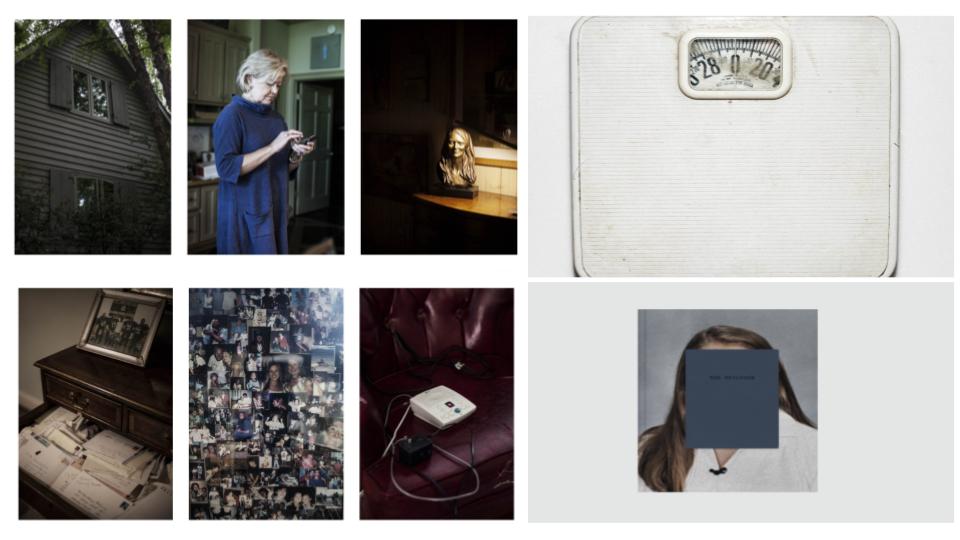
Laia Abril is a research-based artist working with photography, text, video and sound. She typically enjoys telling intimate stories that raise uneasy and hidden realities related with sexuality, eating disorders and gender equality. The Epilogue is a story of the Robinson Family and the aftermath in losing their 26 year old daughter to bulimia. She worked closely with the Robinson family and and reconstructed Cammy’s life through memories and flashbacks shown through the family’s grieving process. The Epilogue is about Cammy’s absence as well as her omnipresence; her energy and willfulness, her struggle with her disorder that truncated her life and capsized the lives of those around her. The book shares a range of dilemmas and the frustration that came with Cammy’s disorder, the guilt and the sorrow, all blended together in the bittersweet act of remembering their most troubles loved one.
Although Abril’s technique is different (she has photographed and created a photobook whereas I’m making a film) I feel like her concept and the elements she has pictured represents greatly of the feel I would like my film to be. For example, she is not directly photographing Cammy, because she has passed, but has photographed elements of Cammy’s life that all refer to her illness and troubled life. This is a technique that I would like to include in my film; not directly filming my Mother all of the time however incorporating certain elements like her medicine, doctors notes, my siblings etc that are all to do with her illness and struggles of every day life. I feel as though this gives a more intriguing feel to photography and film and allows the audience to make connections between the illness and various other thing’s in the person’s life.
She also tends to use archives of Cammy and the family from when she was alive; apparently happier times that strikes a great juxtaposition in the recent photographs that she has taken. This is something that I may experiment with to create some hard hitting juxtapositions within my own films – showing the difference in the past and how things have changed since my Mum fell ill.

CONCEPTUAL&CONTEXTUAL: This image is of Cammy’s mother. As I mentioned, Abril tends to use archives that show happier times that involved Cammy. Visually, this image is very sad and mundane and juxtaposes the old images greatly showing a huge difference in mood and family connection. Her mother appears very dull and worn out – showing the affects Cammy’s death has had on her. The photograph is essentially conveying a range of emotions which was Abril’s aim when it came to making this project. It shows remembrance, sadness and somewhat moving on. The image is very simple, however it makes you wonder all the things going round in the Mother’s head, that is also revealed throughout the book; ‘Where did it all go wrong?’, ‘Was she really unhappy?’, ‘What could we have done differently?’. As I have been saying a lot within my personal project, sometimes pictures and films do not have to be visually complex or pleasing, the meaning and covert messages that are at bay, are often more hard hitting than the visuals themselves. Again, this is something I want to achieve also.
4th photoshoot
Primary and Secondary papers / objects

